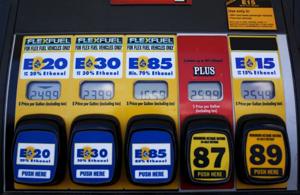Platts proposes change in sulfur content in Asia gasoil benchmarks
(Reuters) Oil pricing agency Platts has begun consulting with traders this week on a change it has proposed in the sulfur content of its key gasoil benchmarks in Asia and the Middle East.
Platts, a unit of S&P Global Inc., is proposing to lower the sulfur specification in its benchmark gasoil assessment from 500 parts per million (ppm) of sulfur to 10 ppm, it said in a note to subscribers Monday.
The potential change would be applied to benchmark Singapore and Middle East gasoil assessments, used as the pricing basis for contracts for the fuel in Asia, and reflects the changing standards for the fuel across the region.
As vehicle use grows globally, with Asia accounting for most of the gains, the movement towards cleaner fuel standards to cap sulfur emissions has gathered pace. Newly built refineries are also producing cleaner fuels in larger volumes.
"Changes in the waterborne trade since 2013, coupled with new goals set by countries to move to even lower-sulfur fuel, suggest that the time is ripe to begin discussing further potential changes in the benchmark," Platts said in the subscriber note.
Asia's key oil consumers China and India are moving towards cleaner fuel standards, pushing up trading volumes in gasoil with 10 ppm sulfur.
Australia, which has shut many of its ageing refineries, has also become a key importer of 10 ppm sulfur gasoil, traders said.
In a briefing in Singapore on the proposed change on Tuesday, Platts said as yet there is no timeline for implementation.
Reflecting the changing fuel standards, trading volumes of 500 ppm sulfur gasoil in the Platts Market-on-Close assessment process fell to 70% of overall volumes in 2016, from 84% in 2013, the company said on its website.
Trading volumes of 10 ppm sulfur diesel, however, jumped to 30% in 2016 from 9% in 2013. Trade in gasoil with 2,500 ppm sulfur ceased in 2015, Platts said explaining its rationale for the proposal.
Still, some push back from the market to the proposed change could be expected as Asian countries have not uniformly accepted the new fuel specifications.
Key diesel consumers such as Indonesia, Bangladesh and Vietnam are still using gasoil with higher sulfur content such as 3,500 ppm and 500 ppm.
Platts last changed the sulfur content in its benchmark gasoil grade to 500 ppm from 5,000 ppm in January 2013.
That change was initially criticized by some traders as coming before Asia was ready, but it was accepted quickly.
Platts is inviting feedback to its latest proposed change by Nov. 1 this year.
Reporting by Jessica Jaganathan; Additional reporting by Seng Li Peng; Editing by Tom Hogue







Comments